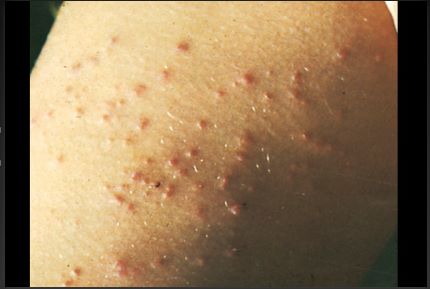 The pyrazus ebeninus is the intermediate host of a blood parasite ultimately determined for estuarine and seabirds, typically seagulls, swams, and some waterfowl. The parasites are introduced back into the marine environment through defecation that eventually release larvae into the water. Once in the water, the parasitic larvae may infect a marine snail, where the snail becomes a host for reproduction and development of the larvae for the remainder its life. Once leaving the snail, these parasites can survive for 24 hours and often become buried in human skin. Due to that humans are not suitable hosts, the parasitic larvae dies, but causes a skin reaction often referred to as, "Swimmer's Itch"(Cercarial Dermatitis). The symptoms produced are typically rash-like that can produce blisters or pimples that may cause itchiness or burning of the infected skin (Fig. 1). The pyrazus ebeninus is the intermediate host of a blood parasite ultimately determined for estuarine and seabirds, typically seagulls, swams, and some waterfowl. The parasites are introduced back into the marine environment through defecation that eventually release larvae into the water. Once in the water, the parasitic larvae may infect a marine snail, where the snail becomes a host for reproduction and development of the larvae for the remainder its life. Once leaving the snail, these parasites can survive for 24 hours and often become buried in human skin. Due to that humans are not suitable hosts, the parasitic larvae dies, but causes a skin reaction often referred to as, "Swimmer's Itch"(Cercarial Dermatitis). The symptoms produced are typically rash-like that can produce blisters or pimples that may cause itchiness or burning of the infected skin (Fig. 1).

Figure 1 displays the symptoms of a Swimmer's Itch infection caused by the parasites from a host marine snail
Image Source: Color Atlas of Pediatric Dermatology Samuel Weinberg, Neil S. Prose, Leonard Kristal Copyright 2008, 1998, 1990, 1975, by the McGraw-Hill Companies, Inc.
All of the above information was obtained from: http://www.cdc.gov/parasites/swimmersitch/faqs.html on May 25, 2014
|